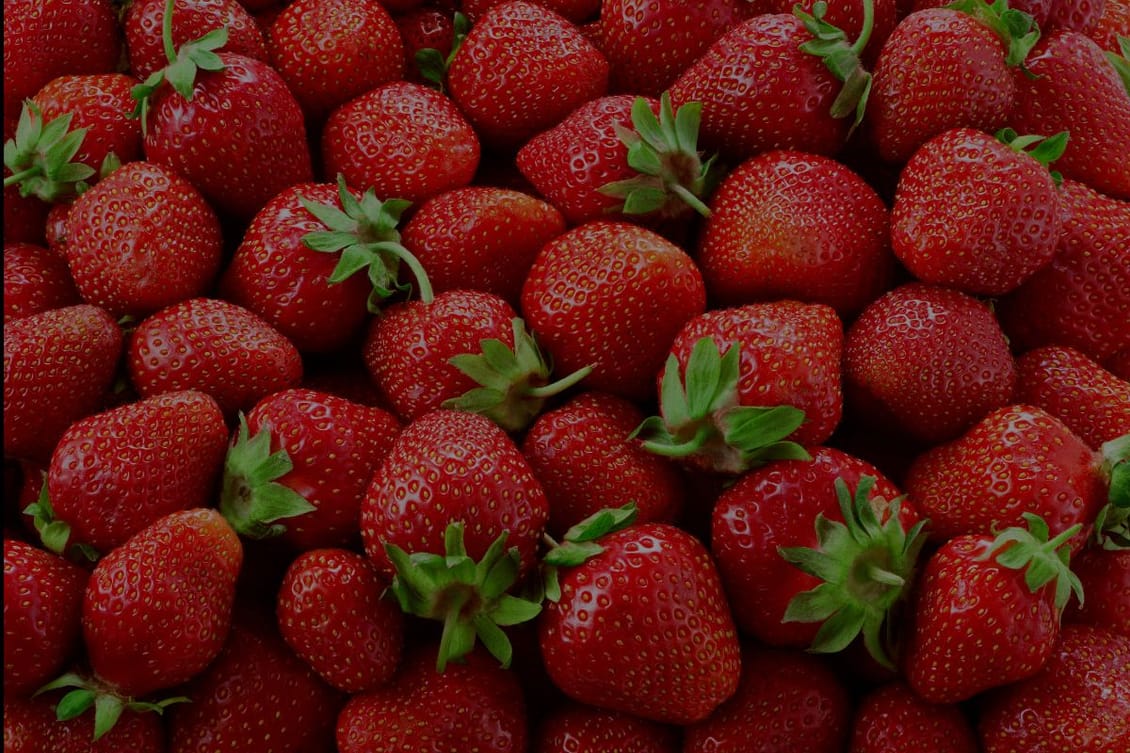
A big welcome to the 27 new foodies who have joined us this week — you’ve got good taste.
If you too have good taste then subscribe to The Sauce — InFlavour's content & insights community, run by global experts. Sink your teeth into stories about food, worth sharing, and receive insights, ideas, opinions, trends, and strategies straight to your inbox.
Keep up with our weekly newsletters on LinkedIn by subscribing here.
Strawberries are a pretty new horticultural development – created by crossing plant species from Europe and North and South America to, resulting in the sweet red fruit we know and love.
And the future of strawberries may be just as innovative as its past.
We’d say so.
Growers in England were among the most enthusiastic developers of the modern strawberry. According to the country’s Royal Horticultural Society, a variety called Fragaria Virginiana was brought to England from America in the 16th century.
But they were small and only a little bit sweet, and not considered a commercially viable crop. Then, in 1712, a French spy called Frézier went to Chile – and while he was there he noticed a strawberry plant with much larger fruit; the Fragaria Chiloensis. He collected it and took it with him back to France; but the large fruit didn’t have much taste to it.
By crossing the Fragaria Chiloensis with smaller, sweeter varieties in Europe, horticulturalists landed upon delicious sweet fruits – and they’re eaten around the world today.
Early in 2024, US-based vertical strawberry grower Oishii secured $134 million in a funding round that will enable the brand to open a solar-powered growing facility, expand its distribution capacity, and invest in advanced robotics tech to increase growing efficiency.
In a press release, Hiroki Koga (Co-Founder and CEO at Oishii) said:
“This capital will help us pave the way for mainstream adoption of vertical farming in the U.S.”
Founded in 2016, Oishii has now raised a total of $189 million to date – and its headcount has grown to 208 employees.
“Ultimately,” Koga told Pitchbook, “most investors agree that agriculture has to change and that vertical farming will play a big role. The biggest question they have is, who is going to be the winner?”
Most vertical farming companies currently focus on salad greens. But in an interview with Agriculture Dive, Kogo said that Oishii is focused on brand building – and that means giving customers something different.
The company grows two strawberry variations, along with small Rubī tomatoes, and has plans to reveal a new berry variation later this year.
And there’s a focus on tech investments and development, rather than scaling just for the sake of getting bigger and bigger:
“By focusing on investing further in our engineering talent and tech, we are able to deliver a strong pathway to profitability through innovation,” Koga noted, “For example, we are the only indoor vertical farm company in the U.S. to pollinate our produce with bees and produce at scale – a feat that was previously thought to be impossible.”
So sweet, red strawberries are helping this brand to build a loyal customer base, differentiate itself in the vertical farming space, and drive innovation in the realm of tech integrations.
If you want to stay ahead of the latest developments in F&B, register now to attend InFlavour 2024. We can’t wait to see you there.
Take your seat at the InFlavour table, a government-backed and world-leading B2B food event by Tahaluf.
E-mail address SubmitWant to keep up to date with all our latest news and information? Enter your name below to be added to our mailing list.
E-mail address Submit